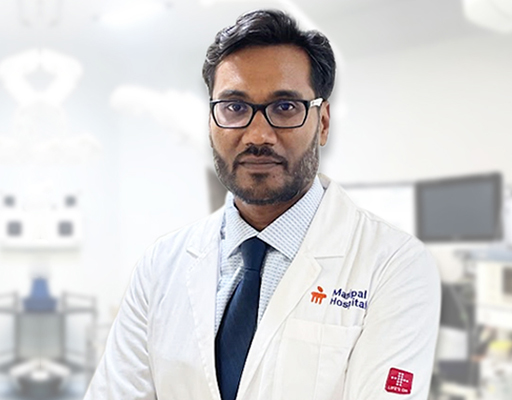
The Complete Guide To Prostate Cancer Surgery
We believe minimally invasive care is life-enhancing care

The introduction of robotic cancer surgery has marked a paradigm shift in the complex and ever-changing field of cancer treatments, especially when it comes to prostate cancer. This revolutionary choice has not only changed the way we treat cancer, but it has also turned into a ray of hope for people struggling to understand the many moving parts of their medical journey.
For those seeking deep insights into their health and treatment options, comprehending the subtleties of this cutting-edge subject is not just advantageous but essential. Our goal behind this comprehensive guide is to get even further into the complex field of robotic assisted prostate surgery—not just to scrape the surface. We will also disentangle its complexities, deconstruct its technical features, and highlight the several facets of this cutting-edge surgical technique. This blog is a voyage into the area where state-of-the-art technology and compassionate care collide, not only in medical procedures.
Understanding Prostate Cancer
-
The Function Of The Prostate Gland In Reproduction
The complex tissues that surround the prostate gland are usually the site of the initiation of prostate cancer. This little organ, about the size of a walnut, is located just below the bladder and is very important to the male reproductive system. The prostate helps nourish and transport sperm by secreting seminal fluid
-
Genetics: Deciphering The Suitability Code
Inherited factors also contribute to prostate cancer. Research has shed light on the complex relationship between genetics and the risk of cancer, understanding issues that highlight the significance of family history.
-
Environmental And Lifestyle Factors
In addition to genetics, environmental factors, and lifestyle changes also play a role in the development of prostate cancer. There are external factors that are like triggers in the transition from healthy prostate cells to malignant development, ranging from food habits to exposure to specific chemicals.
-
Taking Age Into Account: Getting Around the Temporal Terrain
Since prostate cancer usually appears at one age, it is important to understand this temporal aspect. There certainly are age-related risks that explain the higher incidence of this type of cancer in older males. This element not only facilitates understanding but also emphasizes the significance of customized screening methods for various age groups.
-
Screening and Early Detection: Providing Knowledge to Empower
Now come risk factors that play a pivotal role in early detection and screening. Equipped with an awareness of the function of the prostate, genetic markers, lifestyle factors, and age-related risks, we are sure that you understand the significance of routine testing. The likelihood of a successful course of therapy increases with early detection, thereby making it a potent weapon in the fight against prostate cancer.
What Causes Prostate Cancer?
Particular Mutations in Genes
- Genetic Blueprint: Your healthcare expert will examine the effects of particular genetic alterations that may increase your risk of prostate cancer by reading your Genetic Blueprint.
- Individual Genetic Makeup: Understanding that differences in specific genes can affect your unique risk factors is important.
Environmental Factors
- Location Makes A Lot Of Difference: You need to understand and examine regional variations and how the environment in your area can affect your risk of prostate cancer.
- Local Precautions: In order to reduce potential dangers, you need to take into account several factors when choosing a lifestyle.
Considerations Concerning Age
- Getting Older: Talk to your healthcare professional about the reasons why the risk of prostate cancer increases with age.
- Preventive Health Actions: Take into account age-specific health initiatives, such as screenings and testing, to identify possible problems early.
How Is Prostate Cancer Diagnosed?
- PSA Tests: These tests usually quantify a specific protein that the prostate produces. Increased levels of protein could be a sign of possible problems, thereby leading to prostate cancer.
- Biopsies: In the event of concerns, your healthcare expert will recommend a biopsy which entails taking microscopic tissue samples from the prostate. This process leads to a comprehensive diagnosis and helps determine whether cancer cells are present.
- Imaging Tests: By providing a visual representation of the prostate, advanced imaging methods such as CT and MRI scans aid in the detection of any abnormalities. They provide a rather lucid image for subsequent assessment and planning of robotic prostatectomy.
- Genomic Testing: This type of testing encompasses examining the genetic composition of cancer cells. It provides individualized therapy regimens or robotic cancer surgery that accommodate the unique features of your malignancy.
- Proactive Screening: Early detection of prostate cancer, when it is more curable, is essential for proactive screening. Screening and testing methods can be modified depending on your unique risk factors with the support of your doctor and routine check-ups.
Is Prostate Cancer Surgery Considered A Major One?
- Comprehending The Process Of Making Wise Decisions: Going for robotic cancer surgery requires you to understand the significance of the operation and how it will affect your general health. So, we suggest you take your time, look into and weigh each possibility meticulously with your doctor.
- The Extent Of Prostate Surgery: It is necessary for patients to acknowledge that robotic assisted prostate surgery is a major procedure that has to be carefully considered. They must, at any cost, understand the possible effects on your health.
Taking Care of Issues and Misconceptions
- Common Concerns: Robotic surgeons understand typical worries that patients might have when it comes to robotic assisted prostate surgery, clearing up any misunderstandings to give a more precise understanding of the process.
- Open Communication: They make sure to encourage open communication with your healthcare team if you have any worries or uncertainties regarding robotic prostatectomy.
Conventional versus Contemporary Methods
- Examining Your Options: Make sure you understand the differences between conventional and robotic cancer surgery for treating problems of the prostate. This information is sure to come in pretty handy to make well-informed decisions that are consistent with your preferences.
- Weighing Benefits And Difficulties: You need to take into account the pros and cons of each procedure. This makes it possible for you to assess the possible results and select the one that fits your preferences.
What Types Of Surgery Are Used To Treat Prostate Cancer?
Open Radical Prostatectomy
- Traditional Approach: In order to get rid of the entire prostate gland, this procedure encompasses making a rather bigger abdominal incision.
- What To Know: You need to understand that although this method works well, there may be a chance of complications and a prolonged recovery period.
Prostatectomy By Laparoscopy
- Minimally Invasive: You need to look for a less invasive approach that entails tiny incisions and a camera to aid with precision during the procedure.
- Benefits: Your robotic surgeon will explain all the possible advantages over open surgery, such as less blood loss, shortened hospital stays, and faster recovery.
What Are Some Of The Benefits Of Robotic Surgery?
- Precision: One of the best features of robotic cancer surgery is its capacity to give physicians a precise degree of accuracy. Robotic surgeons can now perform precise motions with perfect control thanks to technology, which immensely lowers the possibility of mistakes occurring during operations.
- Faster Recovery: The recuperation times of patients from robotic assisted prostate surgery are substantially reduced because of its minimally invasive nature. Less postoperative pain means faster and more comfortable healing for the patient. For those who lead busy lives, the quicker return to regular activities is very helpful as it enables them to quickly get back into their routines.
- Diminished Scars: The decrease in scarring following robotic cancer surgery is one of its aesthetic advantages. Smaller incisions result in less scarring and better esthetic results. This component takes care of medical issues and increases patient satisfaction levels with the aesthetic outcomes of the procedure overall.
- What To Consider: Patients should know about the many advantages of robotic assisted prostate surgery, but you should also weigh the hazards. It is essential to seek advice from medical professionals in order to comprehend and assess these hazards.
Frequently Asked Questions
There are some risk factors for prostate cancer, which includes age and family history, cannot be changed, lifestyle modifications such as maintaining a healthy weight, exercising regularly, and consuming a balanced diet rich in fruits and vegetables may help reduce the risk.
The recovery time can not be confirmed for any patient, it can vary depending on the type of surgery performed, the overall health of the patient, and any complications that may arise. Generally, patients can expect a hospital stay of a few days to a week and several weeks to months for a full recovery at home.
Risks associated with prostate cancer surgery may include bleeding, infection, urinary incontinence, erectile dysfunction, damage to surrounding organs or tissues, and rarely, complications related to anesthesia.



